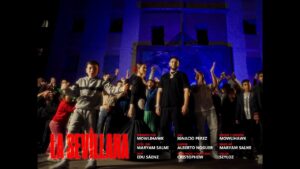What Child Is This Lyrics – Christmas Songs Meaning & Facts By (Singles). You Can Watch This Video On Youtube While The Lyrics Are Written By Traditional.The Music Track Was Released Date :November 18, 1910.
What Child Is This is a timeless Christmas carol, cherished for its emotive lyrics and haunting melody. Rooted in tradition, the song poses a poignant question about the identity of the newborn in Bethlehem, capturing the essence of wonder and reverence surrounding the nativity. Penned by anonymous hands, the enduring appeal of the lyrics is complemented by a melodic track released on November 18, 1910. In this exploration, we delve into the meaning, facts, and universal resonance of the carol, offering a deeper understanding of its cultural and historical significance. Join us in unraveling the mysteries and melodies of What Child Is This a musical gem that has transcended time to become an integral part of the festive season.
[Verse 1]
What Child is this who laid to rest
On Mary’s lap is sleeping
Whom angels greet with anthems sweet
While shepherds watch are keeping
This, this is Christ the King
Whom shepherds guard and angels sing
Haste, haste to bring him laud
The babe, the son of Mary
[Explanation Of Verse 1]
The initial stanza paints a serene picture, questioning the identity of the peacefully resting child in Mary’s embrace. The lyrics convey a sense of calm, with angels encircling the scene, singing harmonious anthems. Portrayed as guardians, the shepherds watch over this divine moment. The child is emphasized as “Christ the King,” accentuating the profound significance of the infant’s identity. The urgency in the phrase “Haste, haste to bring him laud” conveys the call to celebrate and praise this momentous occasion—the birth of Mary’s son.
[Verse 2]
Why lies He in such mean estate
Where ox and ass are feeding
The end of fear for all who hear
The silent Word is speaking
This, this is Christ the King
Whom shepherds guard and angels sing
Haste, haste to bring him laud
The babe, the son of Mary
[Explanation Of Verse 2]
The second stanza explores the modest circumstances of the child’s birth. The rhetorical question “Why lies He in such mean estate” prompts contemplation on the stark contrast between Christ’s regality and the simplicity of His surroundings, even with the presence of farm animals. The term “silent Word” signifies a potent message that dispels fear for those who heed it. The repetition of the proclamation of Christ as the King reinforces the central theme, and the call to hasten the praise persists, urging believers to recognize and honor the babe, the son of Mary.
[Verse 3]
So bring Him incense, gold and myrrh
Come peasant king to love him;
The King of Kings salvation brings
Let loving hearts enthrone him
This, this is Christ the King
Whom shepherds guard and angels sing
Haste, haste to bring him praise
The babe, the son of Mary
Raise, raise the song on high
The Virgin sings her lullaby
Joy, joy for Christ is born
The babe, the son of Mary
[Explanation Of Verse 3]
The third stanza introduces the concept of presenting gifts—incense, gold, and myrrh—as homage to the newborn. The lyrics draw from the biblical story of the Magi offering these precious gifts to honor Jesus. Referring to the “peasant king” highlights the paradoxical nature of Jesus’s kingship, challenging conventional ideas of royalty. The King of Kings is heralded as the one who brings salvation, and the call to enthrone him in loving hearts underscores the spiritual significance of this event. The repetition of the refrain reinforces the central message of praising and honoring the child, recognized as Christ the King.







